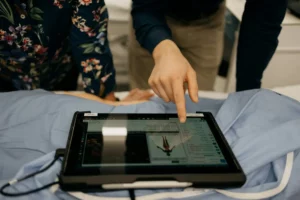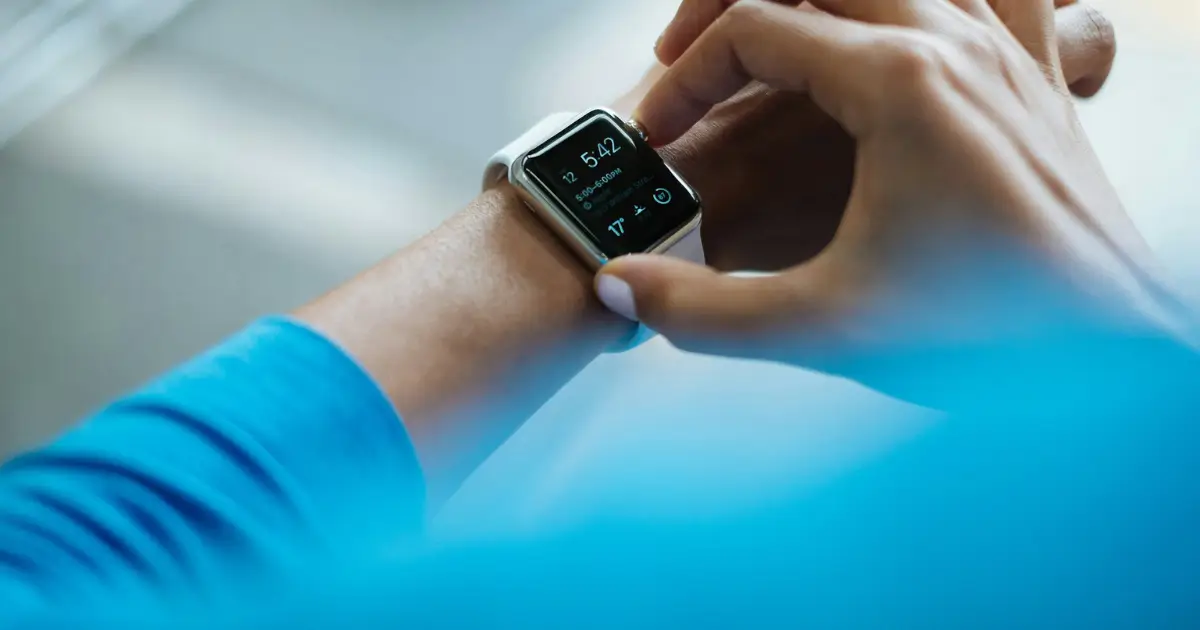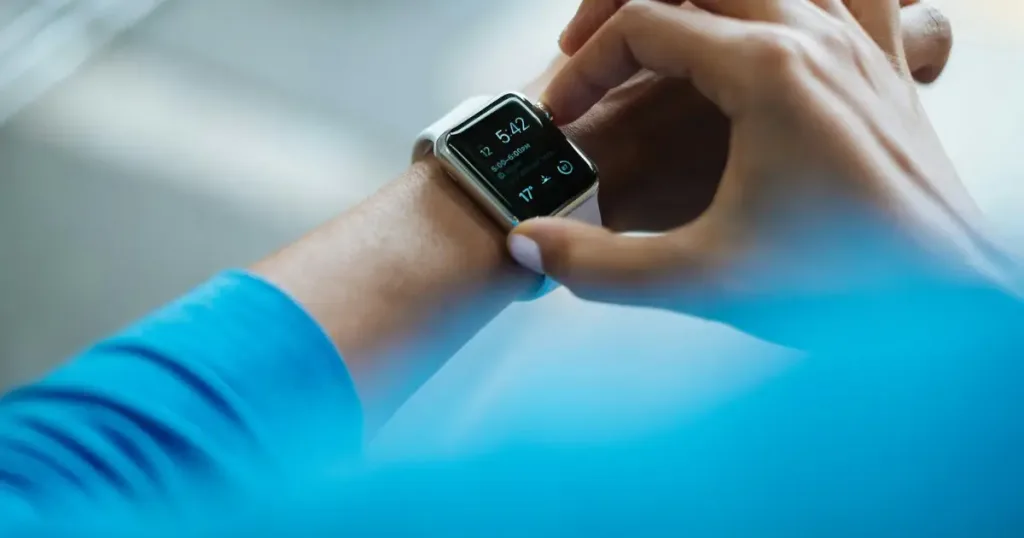The healthcare industry is undergoing a digital revolution, driven by a surge in demand for accessible, efficient, and patient-centric healthcare solutions. Nearshore App Development for HealthTech companies are at the forefront of this transformation, developing innovative software solutions that improve patient experiences, empower healthcare professionals, and optimize healthcare delivery. However, navigating this dynamic landscape presents a unique set of challenges and opportunities.
[ez-toc]
The Evolving HealthTech Landscape: Challenges and Opportunities
HealthTech software development faces distinct challenges. Stringent regulations regarding patient data privacy and security demand robust compliance measures. Additionally, the need for user-friendly interfaces and real-time data integration necessitates a blend of technical expertise and user-centric design principles.
On the flip side, the HealthTech sector presents immense opportunities. The rise of telemedicine, remote patient monitoring, and AI-powered diagnostics necessitates the development of mobile apps, web apps, and interoperable medical software. These software solutions can foster patient engagement, streamline workflows for healthcare professionals, and revolutionize data-driven healthcare delivery.
Section 1: The Special Attributes of HealthTech Software Development

HealthCare Apps must be accurate, fast, and secure. Foto de Trnava University
Key Characteristics
Security and Compliance
HealthTech software handles sensitive patient data, so robust security measures are crucial to prevent breaches and ensure patient trust. This heavily influences decisions around data encryption, access control, and development methodologies that prioritize security throughout the entire software lifecycle.
Strict adherence to the Health Insurance Portability and Accountability Act (HIPAA) and other data privacy regulations is non-negotiable.
Scalability and Interoperability
Healthcare systems often involve numerous stakeholders and data sources. After all, HealthTech software needs to adapt to growing user bases and seamlessly integrate with existing Electronic Health Records (EHR) systems and medical devices.
The ability to adapt to growing user bases and integrate seamlessly with existing healthcare systems (interoperability) is a major focus during development, requiring the use of open standards and Application Programming Interfaces (APIs) to facilitate smooth data exchange.
Also, scalability considerations are crucial during the planning phase to ensure the software can handle increased usage and data volume.
User-friendliness
Both patients and healthcare professionals with varying technical skills will use the software. Intuitive and user-friendly interfaces are essential for fostering patient engagement and ensuring efficient workflows for medical staff.
User experience (UX) research and design become critical aspects of the planning phase. Development prioritizes clear navigation, simple instructions, and accessible features for users of all technical backgrounds.
Real-time Data Integration
HealthTech software often deals with time-sensitive data like vital signs or medication schedules. The ability to collect, analyze, and display patient data in real-time allows for faster diagnosis, better treatment decisions, and improved patient outcomes.
It’s all about the ability to collect, analyze, and display patient data, fast. Real-time data integration heavily influences decisions around data architecture, requiring robust infrastructure and efficient data processing pipelines during development and execution.
Specific Requirements and Concerns
Data security
Robust security protocols to safeguard sensitive patient information.
- Protocols: Implement robust encryption protocols like AES-256 to safeguard sensitive patient data both in transit and at rest.
- Frameworks: Adhere to security frameworks like NIST Cybersecurity Framework to establish best practices for data protection.
Regulatory compliance
Adherence to evolving healthcare regulations.
- Regulations: Ensure strict adherence to regulations like HIPAA (US), GDPR (EU), and similar data privacy and personal identifiable information (PII) regulations depending on your target market.
- Compliance programs: Develop and maintain a comprehensive compliance program to manage regulatory risks and ensure ongoing adherence.
Interoperability
Seamless data exchange between various healthcare systems.
- Standards: Utilize industry-standard interoperability standards like HL7 FHIR to facilitate seamless data exchange between different healthcare systems.
- APIs: Develop well-documented APIs to enable smooth integration with existing EHR systems and medical devices.
Usability
User-friendly interfaces for patients with varying technical proficiency.
- Accessibility guidelines: Follow accessibility guidelines like WCAG to ensure the software is usable for people with disabilities.
- User testing: Conduct thorough user testing with representatives from both patient and healthcare professional demographics to identify and address usability issues.
Section 2: Types of Health-Oriented Software

From administrative support to IoT wearables, there are dozens of HealthTech sub-categories. Photo by Jakayla Toney
The diverse landscape of HealthTech encompasses a wide range of software solutions catering to various needs within the healthcare industry. Here’s a glimpse into some of the most prominent types:
#1 Telemedicine Solutions (TeleHealth)
Telemedicine platforms enable remote consultations between patients and healthcare providers. This is invaluable, especially if there are mobility issues. For example: a patient in a rural area can consult a dermatologist for a rash via a secure video call, without taking the road.
- Stakeholders/Users: Patients, doctors, nurses, specialists.
- Challenges: Ensuring secure video conferencing, integrating with existing workflows, managing reimbursement models.
- Opportunities: Improved access to healthcare in remote areas, increased patient convenience, potential cost reduction for patients and providers.
- Household Names: Teladoc, Amwell, Doctor on Demand
#2 Patient Management Systems (PMS)
PMS’ are software applications used by healthcare providers to manage patient information, appointments, and billing. A doctor’s office uses a PMS to schedule appointments, maintain patient records, and send appointment reminders.
- Stakeholders/Users: Doctors, nurses, administrative staff.
- Challenges: Ensuring data security and privacy, maintaining system uptime and performance, integrating with other healthcare IT systems.
- Opportunities: Streamlined workflows for medical practices, improved patient communication and engagement, enhanced operational efficiency.
- Household Names: Athenahealth, eClinicalWorks, Epic
#3 Electronic Health Records (EHR) Systems
EHR Systems are digital platforms for storing and managing a patient’s medical history. Hospitals and clinics use EHR to access information on patient’s previous visits, medications, and allergies.
- Stakeholders/Users: Patients, doctors, nurses, hospitals, pharmacies.
- Challenges: Ensuring data accuracy and interoperability, addressing patient privacy concerns, complying with regulations.
- Opportunities: Improved care coordination, reduced medical errors, enhanced patient engagement in their own health.
- Household Names: Oracle, McKesson
#4 Treatment Plan and Care Coordination Software
Care software tools assist healthcare providers in developing and managing personalized treatment plans for patients. Care teams can use such software to create a personalized treatment plan for diabetic patients, for instance. It can include medication schedules, diet recommendations, and educational resources.
- Stakeholders/Users: Doctors, nurses, care coordinators, patients.
- Challenges: Integrating with EHR systems and other healthcare IT platforms, ensuring patient engagement with treatment plans.
- Opportunities: Improved communication and collaboration among healthcare providers, enhanced patient adherence to treatment plans, potentially better health outcomes.
- Household Names: MyChart, Propeller Health
#5 Medical Device Integration Software
Medical Device Integration that enables seamless data exchange between medical devices and healthcare IT systems, sometimes using IoT. Hospitals can integrate wearable blood pressure monitor with its EHR system to allow for continuous monitoring and automatic data recording, for example.
- Stakeholders/Users: Medical device manufacturers, healthcare providers, IT professionals.
- Challenges: Ensuring data security and device compatibility, maintaining reliable data transfer, complying with regulatory requirements for medical devices.
- Opportunities: Real-time patient monitoring, improved data-driven decision making, enhanced patient care and outcomes.
- Household Names: AliveCor, Dexcom, Medtronic
Section 3: Building High-Performing HealthTech Teams

Building High-Performing HealthTech Teams should combine full-time employees, augmented staff, and contractors. Photo by Lee Campbell
The success of a HealthTech software project hinges on assembling a team with the right blend of technical prowess and soft skills.
Software Developers
Hard Skills: Programming languages (Java, Python etc.), Mobile app development frameworks (React Native etc.), Database management
Soft Skills: Problem-solving, Analytical thinking, Attention to detail
UI/UX Designers
Hard Skills: User-centered design principles, User interface (UI) and User experience (UX) design tools
Soft Skills: Creativity, Empathy, Communication
Security Experts
Hard Skills: Cybersecurity protocols, Data encryption techniques
Soft Skills: Risk management, Attention to detail
Compliance Officers
Hard Skills: Regulatory knowledge (HIPAA etc.), Regulatory change management
Soft Skills:Detail-oriented, Proactive communication
Section 4: Growing and Upskilling Your HealthTech Development Team

Managing a software engineering team comes with unique challenges and demands a nuanced approach. Photo by Firosnv. Photography
There are several strategies HealthTech companies can leverage to build and maintain high-performing development teams:
- US-Based Full-time Employees (FTEs): Offers direct control and close collaboration, but can be expensive and geographically limited.
- Nearshore Staff Augmentation: Partners with nearshore development teams in Latin America (LatAm) for cost-effective access to a wider talent pool with similar time zones and cultural understanding.
- Software Development Outsourcing: Offers access to a broad talent pool at potentially lower costs, however, communication challenges and intellectual property (IP) concerns may arise.
- AI Enhancements in HealthTech Software Development: Utilizing AI tools for tasks like code generation, testing, and data analysis can boost efficiency and reduce development time.
Frequently Asked Questions (FAQs) on Nearshore App Development for HealthTech in LatAm
Partner with Ubiminds to Revolutionize HealthTech Solutions through our Expert Development Support
At Ubiminds, we understand the unique challenges and opportunities of HealthTech software development. We offer a comprehensive suite of services designed to empower your team and accelerate your project’s success. Our nearshore staff augmentation model provides you with access to highly skilled developers with proven experience in healthcare IT. We leverage the latest technologies and agile methodologies to ensure efficient development, robust security, and seamless integration with existing healthcare systems.
Here’s how Ubiminds can help you:
- Staff Augmentation: Expand your development team with nearshore HealthTech specialists.
- Software Development Outsourcing: Offload specific project components to our experienced development teams.
- AI Strategy and Development: Leverage AI to streamline development processes and enhance your HealthTech solutions.
Contact Ubiminds today and let’s discuss how we can help you build innovative and secure HealthTech solutions that transform patient experiences and empower healthcare professionals.

International Marketing Leader, specialized in tech. Proud to have built marketing and business generation structures for some of the fastest-growing SaaS companies on both sides of the Atlantic (UK, DACH, Iberia, LatAm, and NorthAm). Big fan of motherhood, world music, marketing, and backpacking. A little bit nerdy too!








